 2003 Kia Opirus Dimensions, Size & Specs
2003 Kia Opirus Dimensions, Size & SpecsMeasurements of the 2003 Kia Opirus, engineered for optimal performance and comfort
| Dimensions | |
|---|---|
| Length: | 4970-4979 mm195.7-196.0 in16.3-16.3 ft |
| Width: | 1850 mm72.8 in6.1 ft |
| Height: | 1486 mm58.5 in4.9 ft |
| Trunk Capacity: | 440 liter15.5 cu ft |
| Trunk Capacity (Max): | 450 liter15.9 cu ft |
| Weight Specifications | |
| Curb Weight: | 1822-1825 kg4017-4023 lbs |
| Maximal permitted Weight: | 2253-2270 kg4967-5004 lbs |
| Tire Specifications | |
| Rims Size: | 16-inch rims:
|
| Tire Sizes: |
|
The Kia Opirus, produced from 2003 to 2010, is a full-size luxury sedan that offers a commanding presence on the road with its substantial dimensions and refined design. Measuring approximately between 4970 mm to 4979 mm (195.7 to 196.1 inches) in length, 1850 mm (72.8 inches) in width, and 1486 mm (58.5 inches) in height, the Opirus stands out as a spacious and comfortable vehicle suited for premium sedan buyers. With a curb weight ranging between 1822 kg and 1825 kg (4017 to 4024 pounds), it balances solid build quality with a reasonably heavy footprint, supporting a maximum weight capacity of 2253 kg to 2270 kg (4967 to 5000 pounds). The Kia Opirus provides a generous luggage capacity of 440 liters (15.5 cubic feet), which slightly increases to 450 liters (15.9 cubic feet) when the rear seats are folded, offering practical versatility for long journeys or bulky cargo. It rides on 16-inch rims sized at 6.5Jx16 paired with tire dimensions of 225/60 R16 or 235/55 R17, which contribute to stable handling and a comfortable ride. The Opirus’s size places it comfortably in the large sedan segment, competing with other luxury sedans by providing spacious interiors and substantial road presence. Whether you prioritize passenger comfort, ample cargo space, or a robust and stable driving experience, the Kia Opirus exemplifies these qualities with dimensions and specifications aimed at a premium market between 2003 and 2010.
Discover the standout features that make the 2003 Kia Opirus a leader in its class
Have a question? Please check our knowledgebase first.
The Kia Opirus produced from 2003 to 2010 has a length ranging from 4970 mm to 4979 mm (approximately 195.7 to 196.1 inches), making it a notably long sedan in its class. The width measures 1850 mm (about 72.8 inches), providing a broad stance for comfortable interior space and road presence. The height stands at 1486 mm (around 58.5 inches), giving the car a balanced profile with good aerodynamics and ample headroom. These dimensions place the Opirus comfortably in the full-size luxury sedan category, catering to those who prioritize spaciousness both inside and out.
The curb weight of the Kia Opirus from 2003 to 2010 ranges between 1822 kg to 1825 kg (approximately 4017 to 4024 pounds). This weight reflects the vehicle’s basic equipped condition, ready for driving without passengers or cargo. The maximum permissible weight, which includes passengers and cargo, is between 2253 kg and 2270 kg (roughly 4967 to 5003 pounds). These weight figures indicate the Opirus’s sturdy build and the robust construction typical of luxury sedans designed for stability and comfort.
The Kia Opirus offers a luggage capacity of 440 liters (about 15.5 cubic feet) with the rear seats in their upright position. This is a respectable volume for full-size sedans, allowing suitable storage for luggage, groceries, or daily items. When the rear seats are folded down, the luggage capacity marginally increases to 450 liters (approximately 15.9 cubic feet). This slight increase provides flexibility for carrying longer or bulkier items, although the design prioritizes rear passenger comfort, so the expansion in cargo space is relatively modest in comparison to some other sedans.
The Kia Opirus is equipped with rims sized at 6.5Jx16, providing a good balance between ride comfort and handling capabilities. It comes fitted with tires measuring 225/60 R16 as standard. Additionally, some models or trim variants may use 235/55 R17 tires. These tire sizes are typical for a full-size sedan, ensuring a smooth ride quality while maintaining good road grip and stability. The 16- and 17-inch tire options also offer a bit of personalization in terms of aesthetics and performance characteristics.
Given the Kia Opirus’s length of around 4970-4979 mm (195.7-196.1 inches), width of 1850 mm (72.8 inches), and height of 1486 mm (58.5 inches), it generally fits comfortably within a standard residential garage. Most standard garage dimensions typically range from about 5.5 meters (18 feet) in length and around 2.7 meters (9 feet) in width, which allows slight clearance space around the car. However, because the Opirus is on the longer side for sedans, owners with smaller or older garages should measure carefully to ensure comfortable entry and exit with some clearance on all sides.
The Kia Opirus did not have a direct predecessor under the Kia brand since it was introduced as a flagship full-size sedan in 2003, aiming to compete with more established luxury sedans. It was built on a modified platform shared with the Hyundai Grandeur, which was slightly smaller. Compared to the Grandeur models available prior to 2003, the Opirus was longer and wider, offering more interior space and a more luxurious appeal. Its approximate length near 5 meters (16.4 feet) made it one of Kia’s largest sedans at the time, differentiating it by providing a more spacious experience than previous Kia sedans, signaling Kia's move toward the premium market.
When compared to similar luxury sedans from the early to mid-2000s, such as the Lexus GS, BMW 5 Series, and Mercedes E-Class, the Kia Opirus was notably longer, stretching close to 5 meters in length. The width of 1850 mm (72.8 inches) and height of 1486 mm (58.5 inches) are also competitive, placing it within the size range of mid-to-large luxury sedans. While rivals like the BMW 5 Series were often slightly shorter and narrower, the Opirus offered a more spacious interior cabin, which appealed to buyers looking for comfort and space. However, its weight was somewhat higher, reflecting its more robust build but potentially influencing fuel efficiency and handling.
The Kia Opirus's substantial exterior dimensions, including a length of around 4970 mm (195.7 inches) and width of 1850 mm (72.8 inches), translate directly into a spacious interior cabin designed for comfort and luxury. Passengers benefit from generous legroom, headroom, and shoulder space, making long journeys comfortable for both front and rear occupants. The sedan’s height of 1486 mm (58.5 inches) also contributes to a feeling of openness inside. Additionally, the vehicle's design emphasized premium materials and amenities during its production period, ensuring that the cabin space was not only large but also refined and quiet.
Throughout its production from 2003 to 2010, the Kia Opirus was primarily powered by a V6 engine designed to offer smooth and robust performance befitting a luxury sedan. The most common engine was a 3.5-liter V6 producing approximately 242 horsepower, which balanced ample power delivery with refined operation. This engine was paired with an automatic transmission aimed at providing smooth gear shifts to enhance ride quality. The Opirus was marketed as a comfortable grand tourer rather than a sporty sedan, so its performance focused more on comfort, quietness, and reliability. Fuel efficiency was reasonable for the class, though not necessarily a standout feature.
The Kia Opirus offers a luggage capacity of 440 liters (15.5 cubic feet) under normal conditions, which is quite adequate for a full-size luxury sedan, comfortably accommodating multiple suitcases or large bags typical for family trips or daily use. When additional space is required, folding down the rear seats increases the capacity slightly to 450 liters (15.9 cubic feet), allowing for longer items to be stored. While the increase isn't huge, it’s sufficient for most luggage needs, making the Opirus practical for families or travelers who value both passenger comfort and cargo versatility.
Discover similar sized cars.
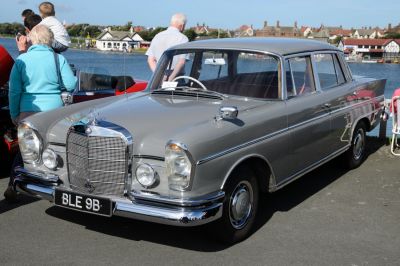
| Production: | 1961-1965 |
|---|---|
| Model Year: | 1961 |
| Length: | 4875 mm191.9 in |
| Width: | 1795 mm70.7 in |
| Height: | 1455 mm57.3 in |
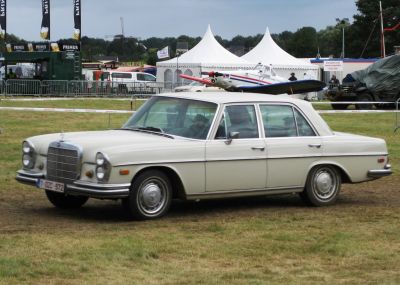
| Production: | 1965-1972 |
|---|---|
| Model Year: | 1965 |
| Length: | 4900 mm192.9 in |
| Width: | 1810 mm71.3 in |
| Height: | 1440 mm56.7 in |
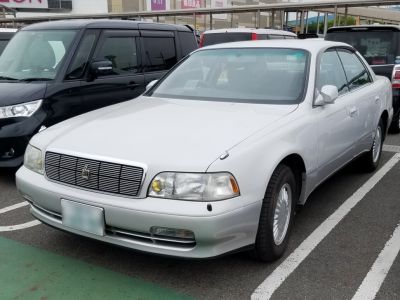
| Production: | 1993-1995 |
|---|---|
| Model Year: | 1993 |
| Length: | 4900 mm192.9 in |
| Width: | 1800 mm70.9 in |
| Height: | 1430-1445 mm56.3-56.9 in |

| Production: | 1993-1996 |
|---|---|
| Model Year: | 1994 |
| Length: | 4890 mm192.5 in |
| Width: | 1786 mm70.3 in |
| Height: | 1430 mm56.3 in |

| Production: | 1995-1997 |
|---|---|
| Model Year: | 1995 |
| Length: | 4900 mm192.9 in |
| Width: | 1795 mm70.7 in |
| Height: | 1420-1430 mm55.9-56.3 in |
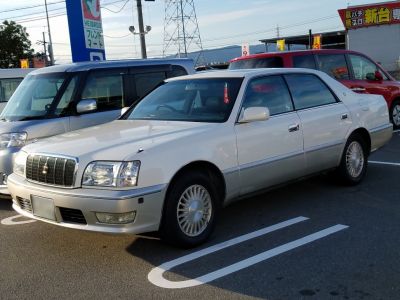
| Production: | 1997-1999 |
|---|---|
| Model Year: | 1997 |
| Length: | 4900 mm192.9 in |
| Width: | 1795 mm70.7 in |
| Height: | 1420-1430 mm55.9-56.3 in |
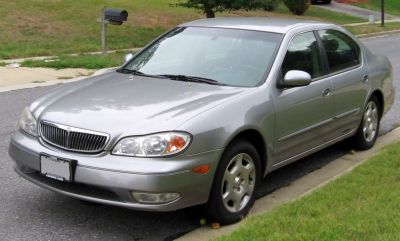
| Production: | 1998-2002 |
|---|---|
| Model Year: | 1999 |
| Length: | 4920 mm193.7 in |
| Width: | 1786 mm70.3 in |
| Height: | 1435 mm56.5 in |
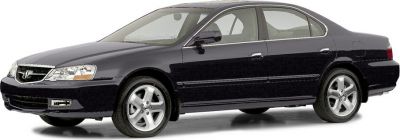
| Production: | 1998-2003 |
|---|---|
| Model Year: | 1999 |
| Length: | 4840-4900 mm190.6-192.9 in |
| Width: | 1785 mm70.3 in |
| Height: | 1410-1425 mm55.5-56.1 in |
